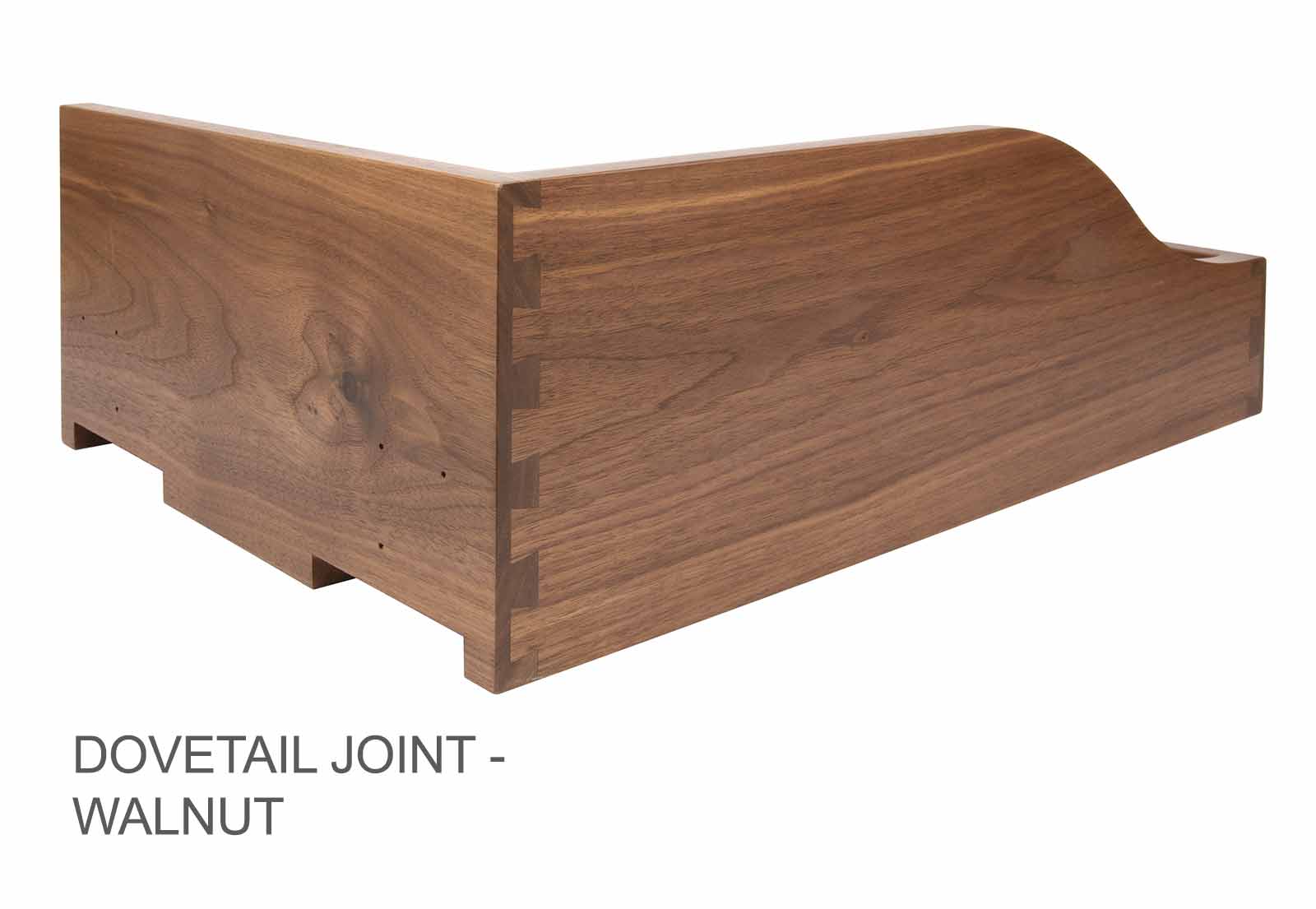What Is A Dovetail Joint & How To Make One
The dovetail joint is commonly used in carpentry for a long-lasting fit. Not only does it work wonders, but it looks fantastic. You can find dovetail joints in many different projects such as cabinets or timber frames. At Häfele, we use these joints as a standard on all of our bespoke timber drawer orders because they are strong, aesthetically pleasing and traditional. If you'd like to know about why dovetail joints are so impressive, this blog will give you a good understanding on how they are made.
What Is A Dovetail Joint?
 Dovetail joints are attractive and secure; they can withstand years of use.
Dovetail joints are attractive and secure; they can withstand years of use.
They are easily identified as they have a unique look composed of tails and pins, which has earned them their name due to their likeness of, you guessed it, dove tails. With this joint, there is no need for other fasteners to be used. Glue can be added to the ample surface area provided by the dove tail cuts.
There are different types of dovetail joints such as the half blind, secret mitred, and the classic through. They are all composed of the same method but vary depending on the tradesperson and desired aesthetic.
Are Dovetail Joints Hard To Make?
Dovetail joints take great craftsmanship and are more difficult to mark and cut than the typical choices. However, dovetail guides are available to assist you with your sawing and can help you make the perfect cuts. They do this by using magnets to guide your saw. The clear guides are highly recommended to allow you to keep an eye on your predefined markings. While this assists with sawing, getting the measurements perfect is key.
How to Make a Dovetail Joint
Patience and practice are key to creating the perfect joints. The first thing you will need to do, before you begin cutting, is to perfectly measure your dovetails.
Dovetail Measuring Tips:
- Ensure the spacing is the same between each dovetail
- The top needs to be perfectly square to ensure it joins with the pins later on
- Each slant should be the same exact angle
How to Remove the Excess Timber
When removing the waste between the dovetails remember to move slowly. The sizing here is vital. Our favourite tool in this space is a fretsaw. With the small blade, you can work your way to the bottom of the cut and carve out the excess. When removing the dovetails from the baseline, clamp your piece solidly to the workbench. Make sure that your cuts have all made it to the baseline. If not, use your chisel to finalise those cuts.
We recommend using a wide chisel, but ensure it fits between your tails without hitting the side. Use the fret saw to cut the waste away from your pin board as well, however, we recommend that you do not start to measure for that until you have completed the dovetail cuts.
Pin Board Measuring Tips
Keep your dovetails close to hand and measure with your real cuts Check that your shoulder lines are square – this is vital before you put the cuts together.
Häfele Made to Order
Cutting dovetails and crafting drawers is time consuming, and our team is here to assist you with your next project by taking some of that time off your hands by providing you with a ready-made high quality product. Explore our bespoke timber drawer services, bespoke timber drawer accessories, or visit our Häfele to Order pages to find the right ready made drawers with dovetail joints for your next project.












